The Beguiling Aran Islands
October/01/2009 Ireland Journal
Summary only available when permalinks are enabled.
Our first three days in Ireland included a trip to Doolin the delightful town on the west coast of County Clare that we visited in 2000, and which is a popular staging area for day trips to the nearby Aran Islands. This time our plan was to stay overnight on two of the islands at B&Bs owned by friends of Mary McCullough. Mary is a member of the Irish PPA Council that governs the Association, a member of PPA’s International Committee, and one of the “Irish Six” who came to America in 2008 to study business with me and visit boutique studios. Mary met us in Doolin for an overnight stay at Cullinans, a B&B and Restaurant that is highly regarded for its food and hospitality, and which definitely lived up to its reputation.

Before Mary arrived, I made friends with a local horse, which turned out to be the first of many horses I photographed during our stay in Ireland.
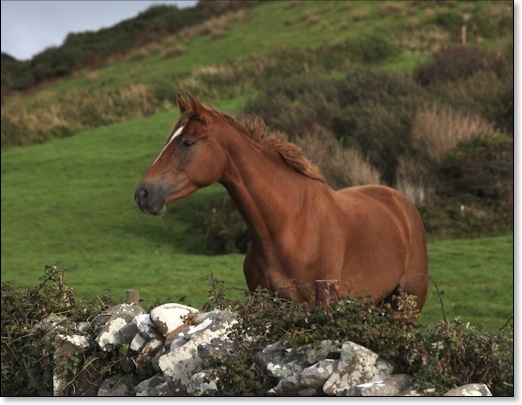
From the Doolin harbor you get a great view of the remarkable Cliffs of Mohr. By the time I got there a mist had closed in, but I was still able to get this shot.
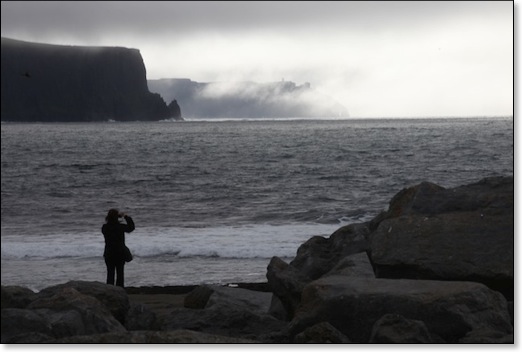
Jim decided to turn in early to sleep off jet lag, but Mary and I found a pub with live music. Doolin is, in fact, known throughout Ireland as a center for traditional Irish music, and you can find a session in one or more pubs on any given night, unless there is a big rugby, hurling, or soccer game going on.
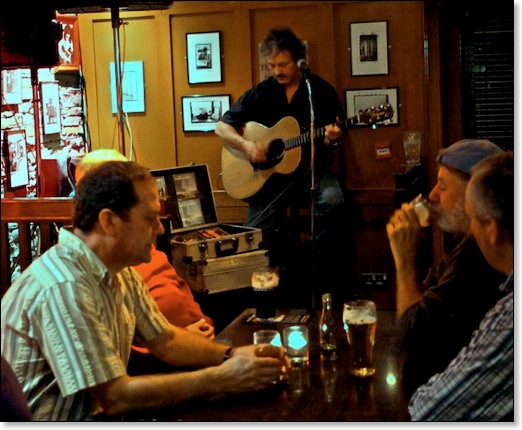
The next morning we set out from Doolin harbor on a small ferry for Inisheer, the smallest of the three islands located at the mouth of Galway Bay. The lure of the Aran Islands to visitors is being able to observe Celtic culture through the traditional way of life practiced by a small Irish-speaking community and to observe ancient ruins dating back to the Bronze and Stone ages against a setting of wild, natural beauty.
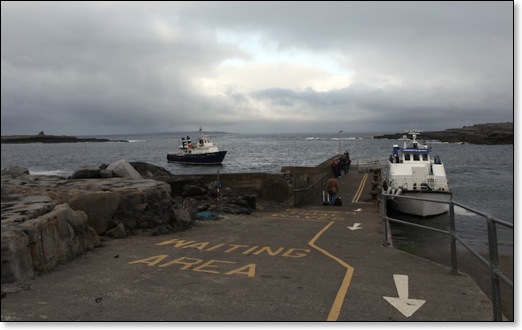
The other two islands are Inishmaan (the middle island) and Inishmore (the largest island). Irish is the main spoken language on all three islands and is the language used for naming the islands and their villages and townlands, as you can see from the map below. Because of the influence of television, Irish is spoken less by the younger generation, and English is spoken and understood by the majority of islanders, so communication is not a problem for visitors who wish to experience essential aspects of Irish culture that had been lost in the more urban regions of Ireland.

Here’s Mary enjoying the 30-minute ferry ride to Inisheer.

As the ferry drew near the Inisheer harbor, we got an excellent view of the ancient castle ruins that can be seen from almost anywhere on the island, and the islanders’ dependency on fishing is evident by the location of homes built hard against the sea.


These ancient islands were first populated in larger numbers around the time of Cromwell’s conquest of Ireland in the mid 17th century, when the Catholic population of Ireland were forced to flee from their lands. With few options, these hardy people adapted themselves to the raw climatic conditions and ultimately created a culture of self-sufficiency: They mixed layers of sand and seaweed on top of rocks to create fertile soil for growing vegetables and grazing grasswithin stone-wall enclosures they constructed for cattle and sheep, which in turn provided wool and yarn to make handwoven trousers, skirts and jackets, hide shoes, and what came to be known as the famous hand-knitted Aran sweaters, shawls and caps. Remarkably, many of these traditions have survived, and all of the islands are still crisscrossed by the labyrinth of stone walls that continue to be integral to the agricultural life of the Aran Islands. Around 300 residents live on Inisheer today.
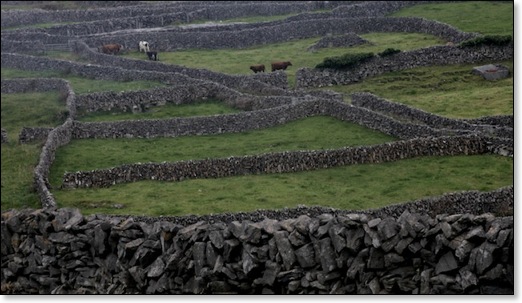
The original homesteaders built rock cottages with thatched roofs and fishing boats from the materials available or through trading with the mainland. The Aran version of the lightweight fishing boat called “the currach” is made from canvas stretched over a sparse skeleton of thin laths, then covered in tar. It is designed to withstand the very rough seas that are typical of islands that face the open Atlantic. Conventional shoes cannot be worn, so the fishermen wear soft calf-skin moccasins called pampooties, made of goatskin or cowskin.
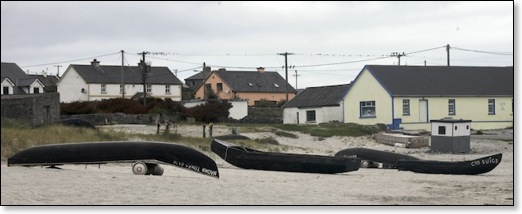
While motor vehicles are allowed on the island’s narrow roads, one of the best ways to see the sights is by hiring a more basic mode of transportation.
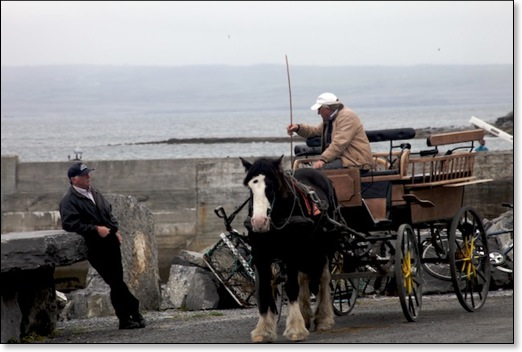
Any trip around Inishseer will include a stop at the rusting shipwreck that is seen in the opening credits of the television comedy series, Father Ted, which is set on the fictional Craggy Island. The ariel view of scenic Inisheer and the rusting wreck have helped to boost tourism.
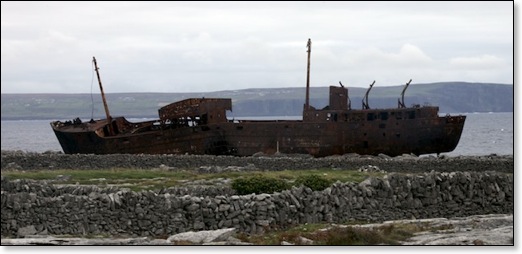
Once Mary got us settled in at our B&B, we enjoyed this spectacular view toward the mainland.
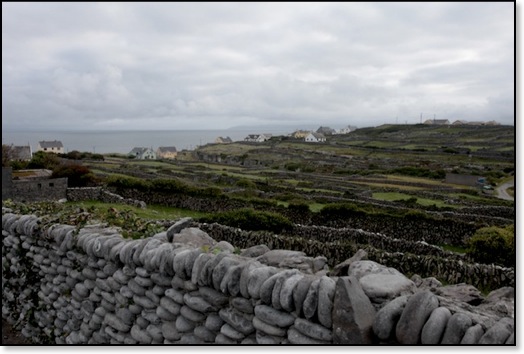
Because Mary had to return to the real world of work, while we vacationed, we took a walking trip together before seeing her off on the Doolin ferry in the afternoon.
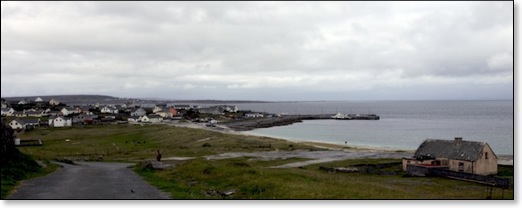
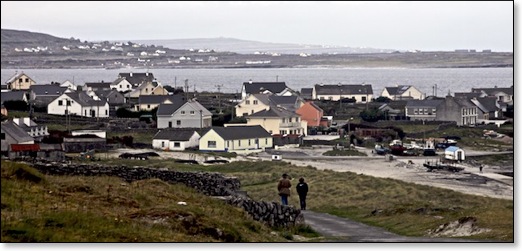
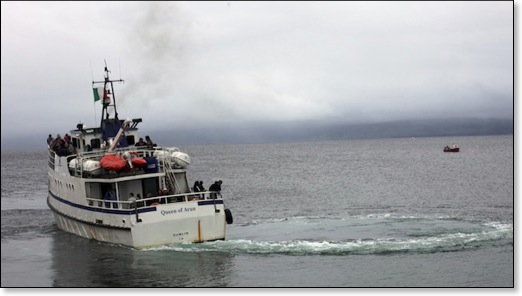
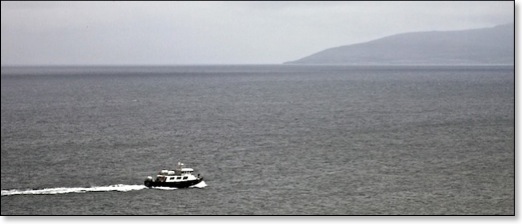
Jim and I continued to explore the island on foot, stopping off for pictures at the picturesque graveyard and ancient church ruins that sit on a hillside from which you can see the Cliffs of Mohr in the distance.

Jim spent the rest of the afternoon reading, while I explored the back side of the island on foot with my camera in tow.

I discovered a path to the fortress ruins . . .
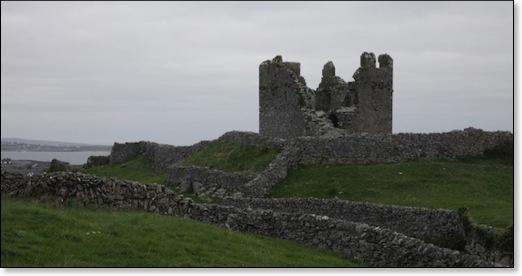
. . . then took several hundred pictures, including a few of some local “wildlife.”
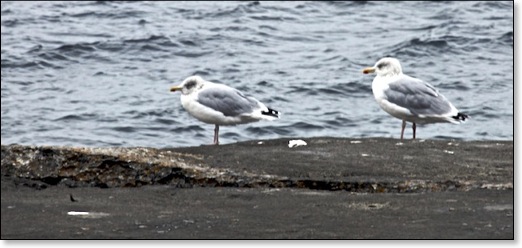

Early next morning we were two of only four passengers to take the ferry to nearby Inishmaan, which has a population of some 160 residents.

Once on Inishmaan, I spent most of the day on foot taking hundreds of pictures of this engaging island. Jim elected to spend most of his day in a friendly pub, where he enjoyed a few pints with the locals. The image below is one of my favorites from a great day of shooting.
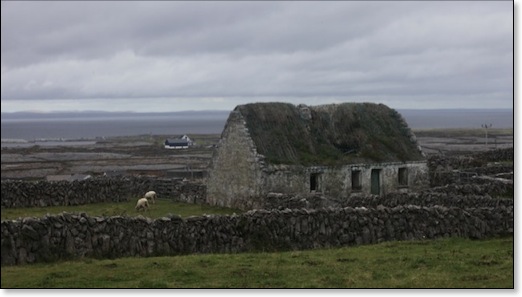
On my wanderings I came across the picturesque summer cottage of John Millington Synge (1887-1909), the famous Irish playwright, poet, prose writer, collector of folklore, and one of the cofounders of Dublin’s Abbey Theatre. He is best known for the play The Playboy of the Western World and Riders to the Sea, which I remember from college readings. At the urging of William Butler Yeats, Synge spent six summers on the Aran Islands, collecting stories and folklore and perfecting his Irish language skills. His first account of life on the islands was published in the New Ireland Review in 1898 and his book-length journal, The Aran Islands, was completed in 1901 and published in 1907 with illustrations by Jack Butler Yeats. I’m told that the book is a slow-paced reflection of life on the islands and the influence of the pagan beliefs of their ancestors on their Catholic religion. I’m going to hunt up a copy of the book when I get home. His charming cottage, shown below, is now a museum. Sadly, Synge died of Hodgkin’s disease just weeks short of his 38th birthday.
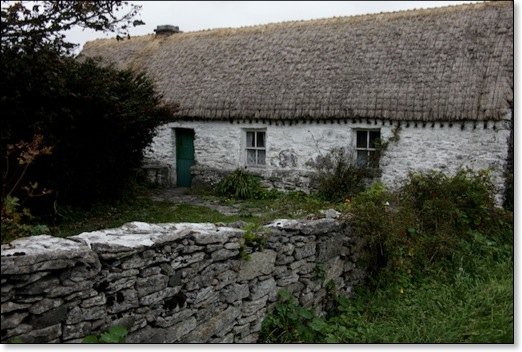
I also visited the lovely Church of Mary Immaculate, which was built in 1939 and showcases the beautiful stained-glass windows of Harry Clarke, the most famous of all Irish stained-glass artists. Clarke also was a talented painter and book illustrator, and you can read his biography by clicking here and see more of his outstanding artwork by clicking here.
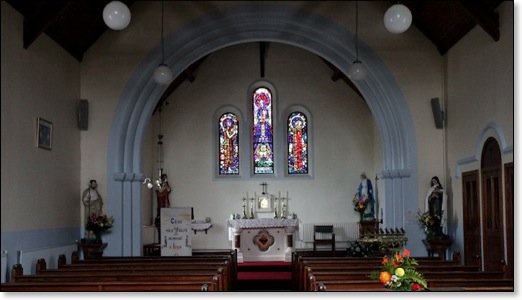

I expect to return to the Aran Islands again because it is so peaceful to wander the rugged, yet beautiful landscape, and everywhere you turn, there is something to photograph. Here are a few of the creatures — great an small — that I encountered on my walk around Inishmaan.
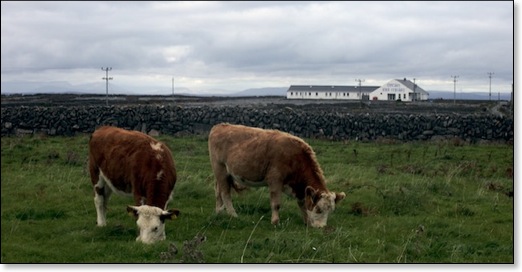
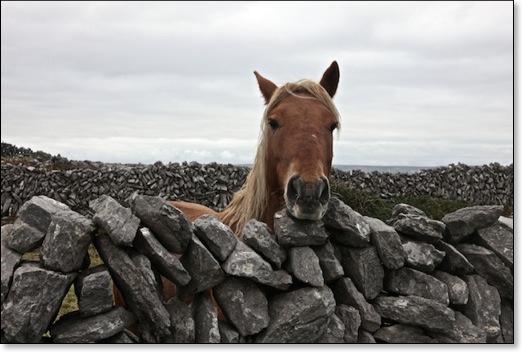
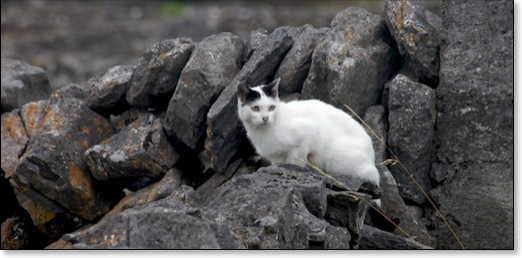

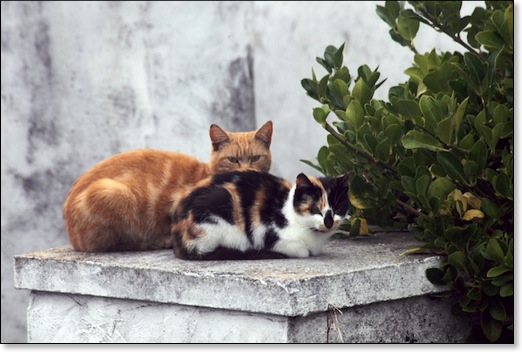
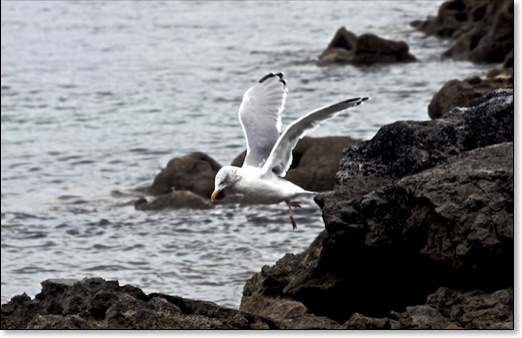
People come to the Aran Islands for a host of reasons: searching for artistic inspiration, spirituality, self-knowledge, or a less-complicated way of life. For me, the joy of the Aran Islands — and the reason I will return again and again — is to step outside of my life to see the ruins, hear the music, and to marvel at the landscapes and the exceptional people who have chosen to make it their home.
The next morning, as we headed for the mainland on the ferry, a school of dolphins gave us a special escort. I managed to get one lucky snapshot before they and the magical Aran Islands disappeared from sight.


Before Mary arrived, I made friends with a local horse, which turned out to be the first of many horses I photographed during our stay in Ireland.

From the Doolin harbor you get a great view of the remarkable Cliffs of Mohr. By the time I got there a mist had closed in, but I was still able to get this shot.

Jim decided to turn in early to sleep off jet lag, but Mary and I found a pub with live music. Doolin is, in fact, known throughout Ireland as a center for traditional Irish music, and you can find a session in one or more pubs on any given night, unless there is a big rugby, hurling, or soccer game going on.

The next morning we set out from Doolin harbor on a small ferry for Inisheer, the smallest of the three islands located at the mouth of Galway Bay. The lure of the Aran Islands to visitors is being able to observe Celtic culture through the traditional way of life practiced by a small Irish-speaking community and to observe ancient ruins dating back to the Bronze and Stone ages against a setting of wild, natural beauty.

The other two islands are Inishmaan (the middle island) and Inishmore (the largest island). Irish is the main spoken language on all three islands and is the language used for naming the islands and their villages and townlands, as you can see from the map below. Because of the influence of television, Irish is spoken less by the younger generation, and English is spoken and understood by the majority of islanders, so communication is not a problem for visitors who wish to experience essential aspects of Irish culture that had been lost in the more urban regions of Ireland.

Here’s Mary enjoying the 30-minute ferry ride to Inisheer.

As the ferry drew near the Inisheer harbor, we got an excellent view of the ancient castle ruins that can be seen from almost anywhere on the island, and the islanders’ dependency on fishing is evident by the location of homes built hard against the sea.


These ancient islands were first populated in larger numbers around the time of Cromwell’s conquest of Ireland in the mid 17th century, when the Catholic population of Ireland were forced to flee from their lands. With few options, these hardy people adapted themselves to the raw climatic conditions and ultimately created a culture of self-sufficiency: They mixed layers of sand and seaweed on top of rocks to create fertile soil for growing vegetables and grazing grasswithin stone-wall enclosures they constructed for cattle and sheep, which in turn provided wool and yarn to make handwoven trousers, skirts and jackets, hide shoes, and what came to be known as the famous hand-knitted Aran sweaters, shawls and caps. Remarkably, many of these traditions have survived, and all of the islands are still crisscrossed by the labyrinth of stone walls that continue to be integral to the agricultural life of the Aran Islands. Around 300 residents live on Inisheer today.

The original homesteaders built rock cottages with thatched roofs and fishing boats from the materials available or through trading with the mainland. The Aran version of the lightweight fishing boat called “the currach” is made from canvas stretched over a sparse skeleton of thin laths, then covered in tar. It is designed to withstand the very rough seas that are typical of islands that face the open Atlantic. Conventional shoes cannot be worn, so the fishermen wear soft calf-skin moccasins called pampooties, made of goatskin or cowskin.

While motor vehicles are allowed on the island’s narrow roads, one of the best ways to see the sights is by hiring a more basic mode of transportation.

Any trip around Inishseer will include a stop at the rusting shipwreck that is seen in the opening credits of the television comedy series, Father Ted, which is set on the fictional Craggy Island. The ariel view of scenic Inisheer and the rusting wreck have helped to boost tourism.

Once Mary got us settled in at our B&B, we enjoyed this spectacular view toward the mainland.

Because Mary had to return to the real world of work, while we vacationed, we took a walking trip together before seeing her off on the Doolin ferry in the afternoon.




Jim and I continued to explore the island on foot, stopping off for pictures at the picturesque graveyard and ancient church ruins that sit on a hillside from which you can see the Cliffs of Mohr in the distance.

Jim spent the rest of the afternoon reading, while I explored the back side of the island on foot with my camera in tow.

I discovered a path to the fortress ruins . . .

. . . then took several hundred pictures, including a few of some local “wildlife.”


Early next morning we were two of only four passengers to take the ferry to nearby Inishmaan, which has a population of some 160 residents.

Once on Inishmaan, I spent most of the day on foot taking hundreds of pictures of this engaging island. Jim elected to spend most of his day in a friendly pub, where he enjoyed a few pints with the locals. The image below is one of my favorites from a great day of shooting.

On my wanderings I came across the picturesque summer cottage of John Millington Synge (1887-1909), the famous Irish playwright, poet, prose writer, collector of folklore, and one of the cofounders of Dublin’s Abbey Theatre. He is best known for the play The Playboy of the Western World and Riders to the Sea, which I remember from college readings. At the urging of William Butler Yeats, Synge spent six summers on the Aran Islands, collecting stories and folklore and perfecting his Irish language skills. His first account of life on the islands was published in the New Ireland Review in 1898 and his book-length journal, The Aran Islands, was completed in 1901 and published in 1907 with illustrations by Jack Butler Yeats. I’m told that the book is a slow-paced reflection of life on the islands and the influence of the pagan beliefs of their ancestors on their Catholic religion. I’m going to hunt up a copy of the book when I get home. His charming cottage, shown below, is now a museum. Sadly, Synge died of Hodgkin’s disease just weeks short of his 38th birthday.

I also visited the lovely Church of Mary Immaculate, which was built in 1939 and showcases the beautiful stained-glass windows of Harry Clarke, the most famous of all Irish stained-glass artists. Clarke also was a talented painter and book illustrator, and you can read his biography by clicking here and see more of his outstanding artwork by clicking here.


I expect to return to the Aran Islands again because it is so peaceful to wander the rugged, yet beautiful landscape, and everywhere you turn, there is something to photograph. Here are a few of the creatures — great an small — that I encountered on my walk around Inishmaan.






People come to the Aran Islands for a host of reasons: searching for artistic inspiration, spirituality, self-knowledge, or a less-complicated way of life. For me, the joy of the Aran Islands — and the reason I will return again and again — is to step outside of my life to see the ruins, hear the music, and to marvel at the landscapes and the exceptional people who have chosen to make it their home.
The next morning, as we headed for the mainland on the ferry, a school of dolphins gave us a special escort. I managed to get one lucky snapshot before they and the magical Aran Islands disappeared from sight.
